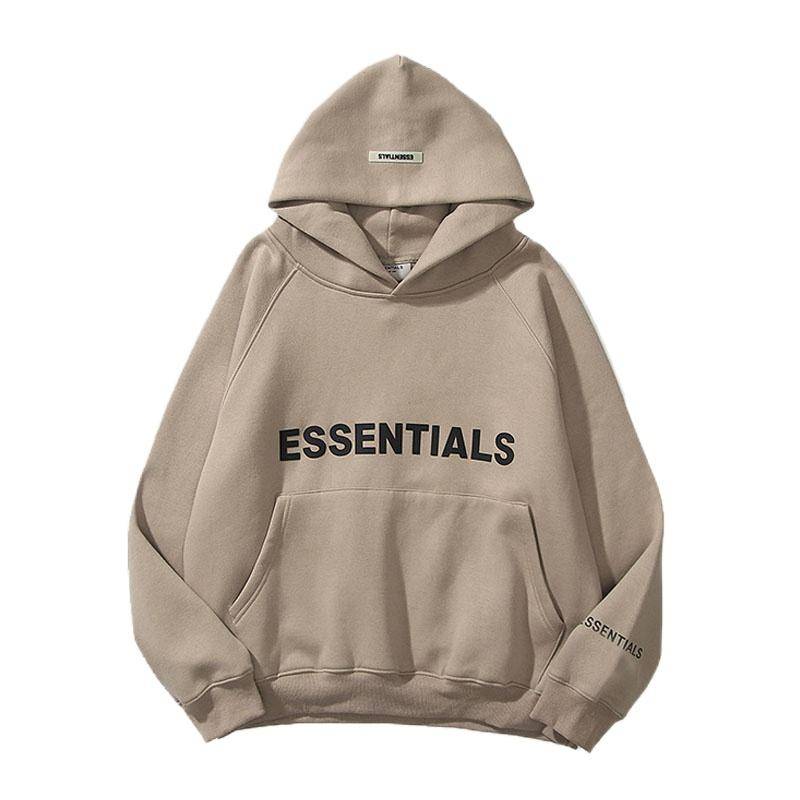Luxury brands are personality symbols of many. The luxury brands are clothes so freaking expensive. Essentials Fear of God is one of the most high-priced brands in essentials sweatshirts, hoodies, trousers, tracksuits, and other items of clothing. But Here’s the deal: clothing companies, make all their money off of selling clothes. They produce shirts and hoodies with high-quality materials. Moreover, they don’t have a sidekick; so they have to pay all their huge bills with the money they make from selling clothes.
8 Reasons Why Fear of God Shirts So Expensive
And here are all the bills they have to pay:
1. They Hire Highly Qualified Designers
First, someone could have designed the clothes. Sometimes it’s one person doing all the research, sourcing for:
- Materials all the drawing
- All the designing
- All the flat sketching
- Innovation in design
Sometimes it’s a whole team with designers and their assistants, their associates, their directors, tech designers, graphic designers, textile designers, and their VP to sign off on everything. So Essentials brand hires fashion protesters to help the designers design all these designs these things make essentials so expensive.
2. Cost of Research Work and Prototype Design
Essentials brand makes muslins and samples before the actual product. Sometimes they can skip the muslin if it’s a repeating style, but they definitely need samples. And if they have a new or tricky style, then they probably need several iterations of samples. They have their samples and sales guys have to sell samples. So you have to pay sales. Some work on commission, some work on salary, some work on some combination of the two, but they have to pay them.
3. Marketing Expenses are Bulky
There are the costs of selling:
- like line sheets
- Look books
- Commercials
- Billboards
- Trade show booths
- Runway shows
- Sales showroom fees
- Traveling costs for traveling sales reps.
These are the ways, they probably need to hire marketing people and social media people.
4. Overall Production Costs
Essentials brand also needs to pay production costs for all of these: line sheets, lookbooks, commercials, print ads, trade shows, and runway shows. Models, photographers, videographers, hair, and makeup stylists, runway set designers, sound guys. They run around yelling at the other peers. And then once the design company gets all their orders together, production begins. As we speak, some poor production manager is poring over their cut tickets one last time before they pull the trigger. Some poor manufacturers have to sit and wrangle a million purchase orders for self-fabric and contrast fabric. A second contrast fabric is great for lining fabric with pocketing and interfacing. Some kinds of closure are a must-have such as:
- Buttons
- Snaps
- Zipper
- lacing and grommets
- Buckles
- Cloth lassos on trims and O-rings
- Trim film, emulous trims.
5. Research on Sizing Demystified
Did you know that sample patterns and production patterns are usually different? So you have to pay someone to make those too. You’ve got to grade patterns; it can make all the sizes. You’ve got to make the markers, not the kind of markers in color. They’re basically guides for cutting, which leads to cutting and bundling and shipping and paying all the people who do the cutting, bundling, and shipping.
6. A-grade Fabric Procurement
What if you have beading or monochrome? We can handle a guitar line, whatever. But in fact, customers love it. Who was making all these things happen? To shift everything to the stitchers, dish, this fish, this fish, to stitch, all sewn up, all done? What if your shirts need to be washed scrubbed and ripped? After the shirts have been assembled, what if your stuff is garment-dyed? What’s garment dyeing?
7. Unfading Color Dying
Garment dyeing is when you dye after the garment has been sewn together. Why would you do that? These are the factors that even make Essentials shirts more expensive. We press the clothes; they clip all the loose threads. They slide on little cardboard thingies into the collar. They put nice jackets on hangers and they slide a plastic baggie over them. However, the Essentials clothing brand punches hang tags with prices and labels. And you know those little buttons, batch, double-check the purchase order, triple-check the EDI because they’ll be like strict chargeback.
8. HR and Marketing Property Protection
The Essentials brand pays the people who make their strategic, cryptic hair instruction label. We mean, seriously, what a little simple tease and forget to pay the security people who make sure that the horrible office manager isn’t stealing all the samples. They need to pay the HR department which will fire the horrible office manager who tries to property intrusion. Some competitors even pay their interns to steal the design ideas. They pay the janitors to get some prototypes stolen. They have to pay the person who pays everyone else, the accounting department. And this is all that goes into the wholesale price to give or take a brain task.
